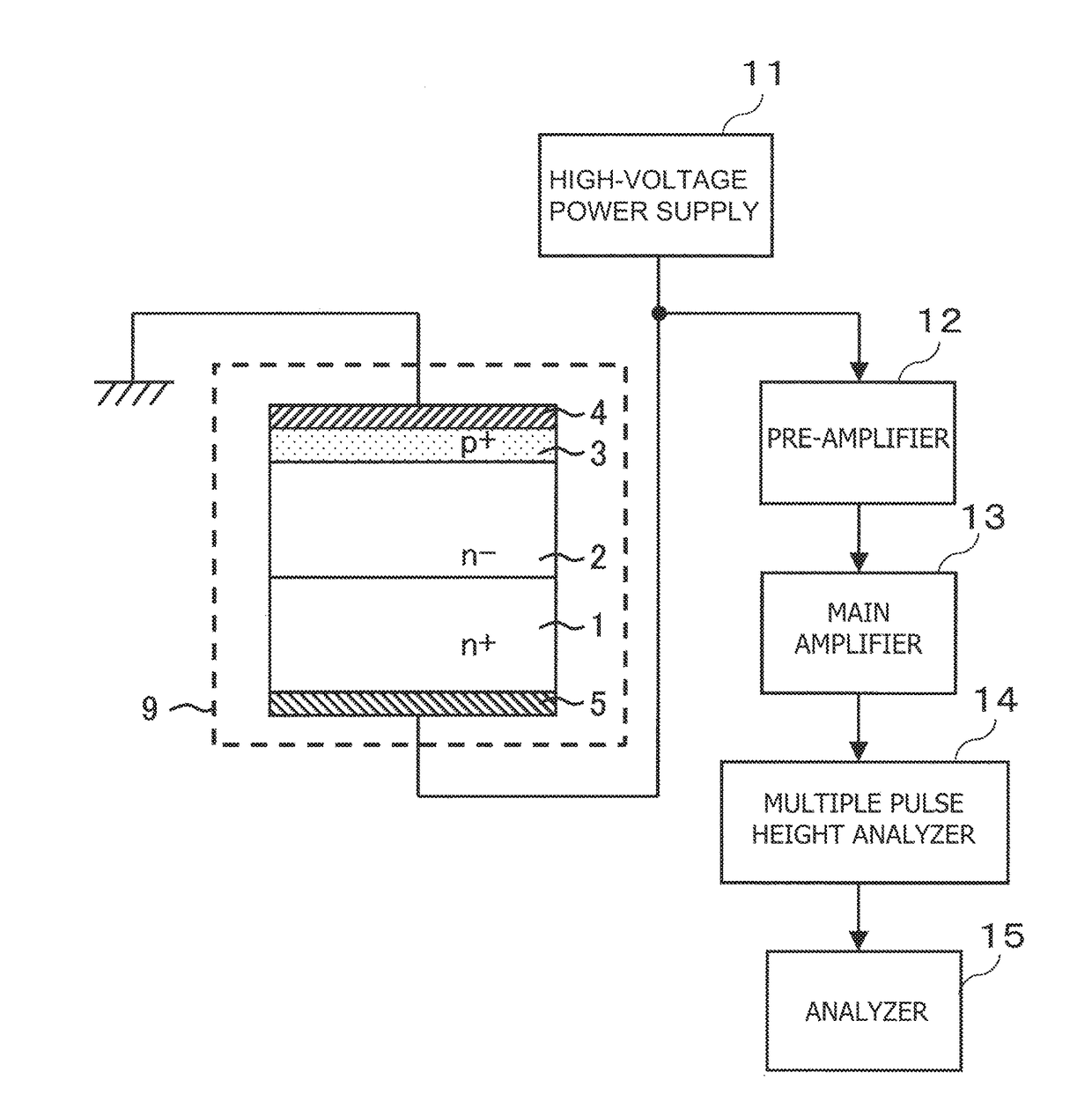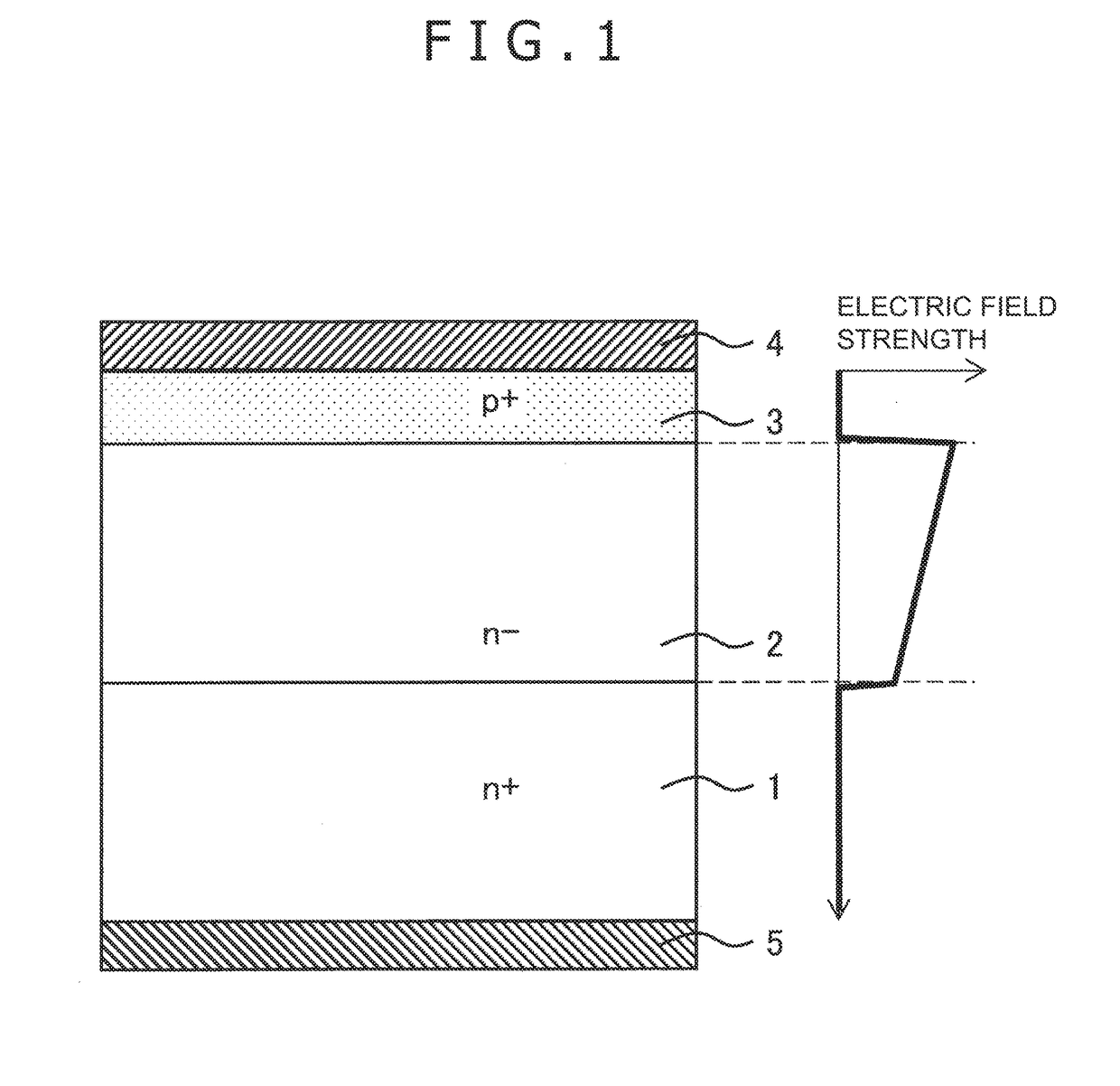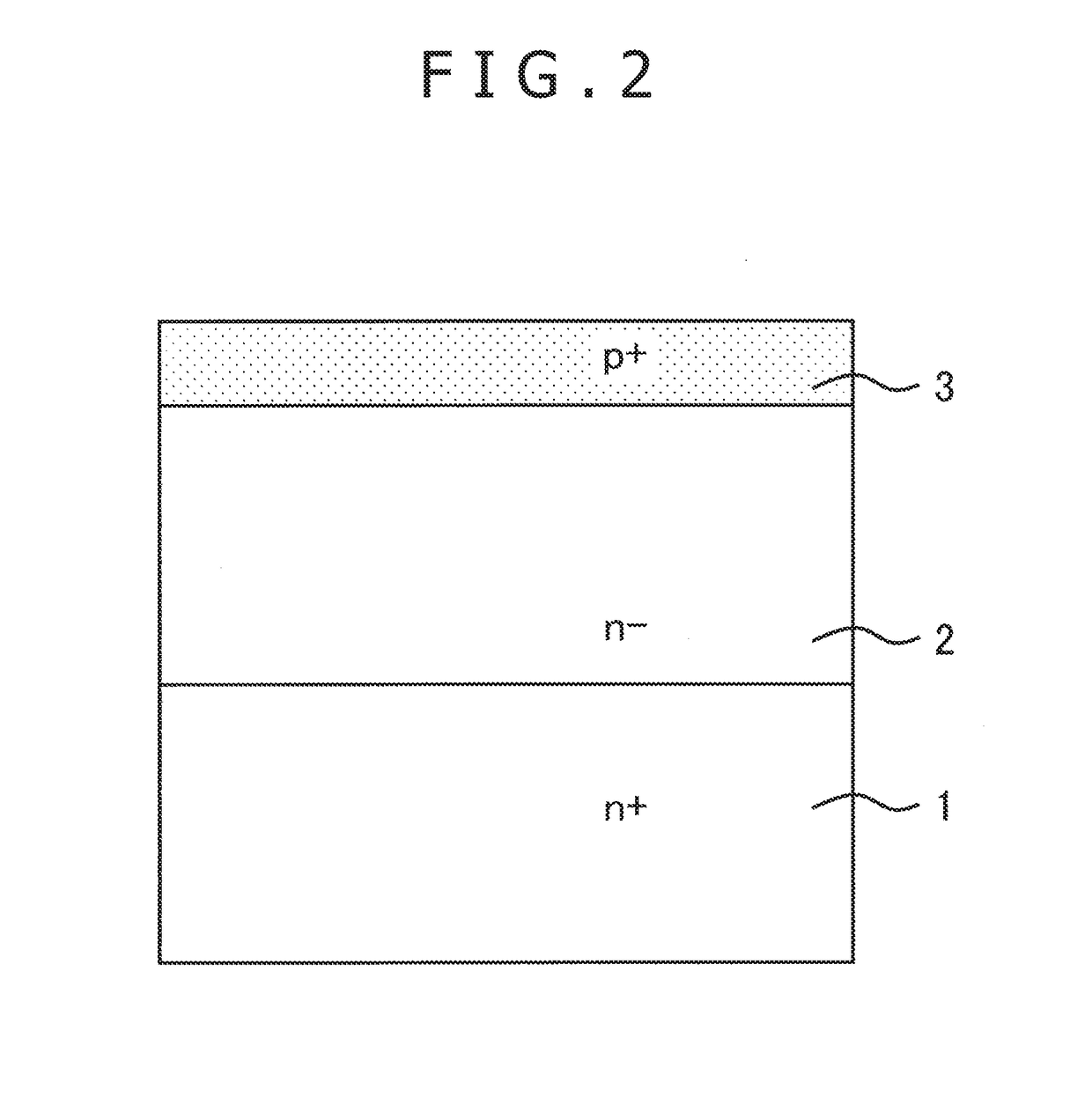Radiation detector and radiation detection device using the same
- Summary
- Abstract
- Description
- Claims
- Application Information
AI Technical Summary
Benefits of technology
Problems solved by technology
Method used
Image
Examples
embodiment 1
[0023]FIG. 1 is an explanatory view illustrating the sectional structure of a radiation detector according to embodiment 1 of the present invention. The radiation detector according to embodiment 1 is a pn-junction radiation detector equipped with a first conductivity type low impurity concentration (n−) SiC radiation sensible layer 2 formed on a first conductivity type (n-type) high impurity concentration (n+) SiC substrate 1, a second conductivity type (p-type) high impurity concentration (p+) semiconductor region 3, a first electrode 4 provided on the front surface of the p+ semiconductor region 3, and a second electrode 5 provided on the back surface of the n+ SiC substrate 1. Further, in this radiation detector, a higher voltage is applied to the second electrode 5 than to the first electrode 4 during operation, and a depletion layer expands through the entire n− SiC radiation sensible layer 2 in the depth direction, with an electric field being applied thereto.
[0024]FIGS. 2 th...
embodiment 2
[0039]FIG. 8 shows the sectional structure of a radiation detector according to embodiment 2 of the present invention. In embodiment 2, a semi-insulating SiC substrate is employed as the radiation sensible layer.
[0040]This embodiment differs from embodiment 1 shown in FIG. 1 in that the radiation sensible layer is a semi-insulating SiC substrate 7 exhibiting a resistivity of 1×105 Ωcm2 or more and that it has the p+ semiconductor region 3 on the upper surface of the semi-insulating SiC substrate 7, and an n+ semiconductor region 8 on the back surface of the semi-insulating SiC substrate 7. That is, there is prepared an SiC substrate in which the p+ semiconductor region 3 is formed through epitaxial growth on the semi-insulating SiC substrate 7 of a thickness of approximately 100 to 500 μm, and in which the n+ semiconductor region 8 is formed through epitaxial growth on the back surface of the semi-insulating SiC substrate 7. Then, the first electrode 4 is formed on the p+ semiconduc...
PUM
 Login to View More
Login to View More Abstract
Description
Claims
Application Information
 Login to View More
Login to View More - R&D
- Intellectual Property
- Life Sciences
- Materials
- Tech Scout
- Unparalleled Data Quality
- Higher Quality Content
- 60% Fewer Hallucinations
Browse by: Latest US Patents, China's latest patents, Technical Efficacy Thesaurus, Application Domain, Technology Topic, Popular Technical Reports.
© 2025 PatSnap. All rights reserved.Legal|Privacy policy|Modern Slavery Act Transparency Statement|Sitemap|About US| Contact US: help@patsnap.com



